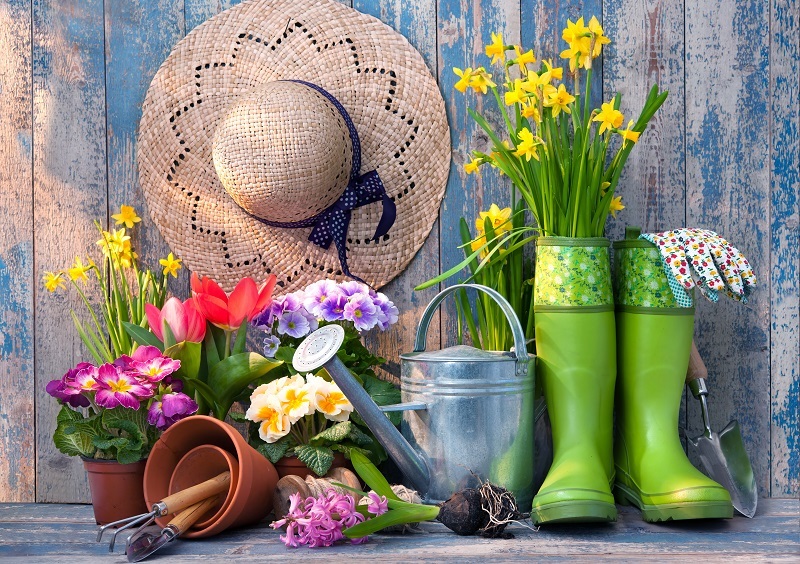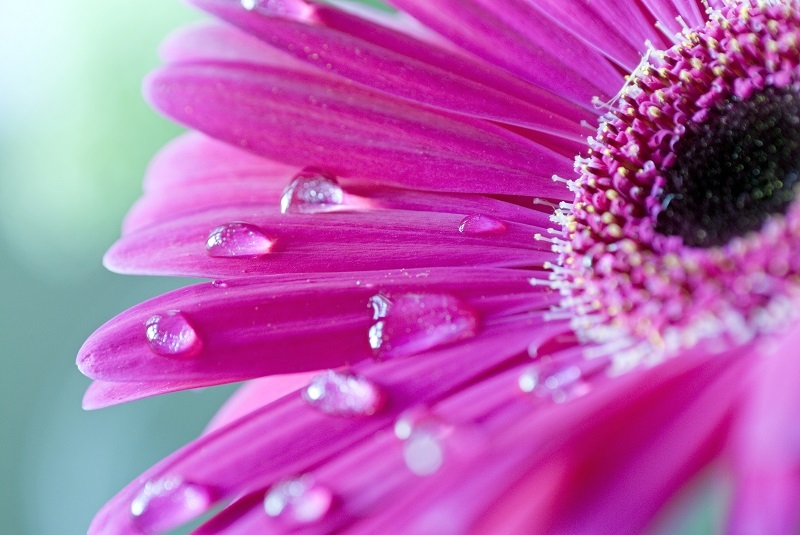Efficient Flower Preservation Hacks to Try Right Now
Are you tired of watching your beautiful bouquets wilt away within days? Discover efficient flower preservation hacks that can help you cherish your favorite blooms for weeks, months, or even years! Whether you're sentimental about anniversary roses, want to decorate your home with lasting floral arrangements, or enjoy crafting with dried petals, this comprehensive guide will introduce you to the best methods to preserve flowers efficiently and effectively.
Why Preserve Flowers?
Flowers bring beauty, fragrance, and joy into our lives. But their ephemeral nature means treasured moments fade quickly. Preserving flowers allows you to:
- Keep memories alive (think wedding bouquets or special gifts)
- Create lasting home decor using natural elements
- Craft unique gifts, cards, or artwork
- Save money by reusing arrangements

Understanding Efficient Floral Preservation Methods
There are several methods to preserve fresh flowers, ranging from traditional air-drying to advanced silica gel and microwave techniques. Each method has its pros and cons, depending on the type of flower, your timeline, and your desired result.
Factors to Consider Before Preserving Flowers
- Flower type: Some flowers retain their color and shape better than others.
- Freshness: It's best to start with blooms at their peak.
- Desired outcome: Flat for framing, or 3D for display?
- Available tools: Determine what equipment or materials you have on hand.
1. Classic Air-Drying: The Easiest Flower Preservation Hack
The air-drying method is the oldest and simplest flower preservation technique -- and you don't need any special equipment. Perfect for sturdy flowers like roses, lavender, baby's breath, and statice.
How to Air-Dry Flowers Effectively
- Remove excess foliage from the stems.
- Bundle stems tightly with a rubber band or string.
- Hang the bunch upside down in a cool, dark, dry, and well-ventilated space.
- Allow 2-4 weeks until completely dry.
- Spray lightly with unscented hairspray to help set the shape and minimize shedding.
Pros of Air-Drying:
- No special equipment needed
- Retains most of the flower's shape
- Great for flowers and herbs
Cons of Air-Drying:
- Color may fade over time
- Not ideal for delicate or high-moisture flowers (e.g., tulips, lilies)
2. Silica Gel: The Fast and Efficient Flower Preservation Secret
For those seeking efficient flower drying hacks that deliver vibrant, three-dimensional blooms, silica gel is your answer. Silica gel crystals pull moisture from flowers rapidly -- often in just 2-7 days.
Preserving Flowers with Silica Gel
- Choose an airtight container deep enough to fit your flowers without crushing them.
- Pour a layer of silica gel into the bottom of the container (about 1 inch thick).
- Place flowers face-up in the gel, and then gently sprinkle more gel around and on top until completely covered.
- Seal the container and store in a cool, dry place.
- After several days, check for dryness. Remove flowers carefully, using a soft brush to remove excess gel.
Benefits of Silica Gel Drying
- Retains vivid colors
- Preserves natural shape and delicate details
- Works well for roses, mums, zinnias, and peonies
Drawbacks:
- Requires purchasing silica gel (available online or at craft stores)
- Not effective for thick flowers with extremely high moisture content
3. Microwave Flower Drying: The Quickest Method
Want ultra-fast results? Use your microwave for quick and efficient flower preservation. Combine this method with silica gel for optimal results.
Steps to Microwave-Dry Flowers
- Fill a microwave-safe container with 1 inch of silica gel.
- Place flowers on the gel, then pour additional silica gel over the petals until fully covered.
- Do not seal; instead, cover loosely with a lid or plate.
- Microwave on low to medium heat in 30-second increments (usually 2-3 minutes total, depending on size).
- Let flowers cool for 24 hours before removing from gel.
Pros:
- Ultra-fast (minutes versus days or weeks!)
- Results in natural-looking preserved blooms
Cons:
- May need some experimentation to perfect
- Most suitable for small flowers
4. Pressing Flowers: For Art, Decor, and Cards
If you prefer flat, delicate flowers for crafts or framing, pressing is a timeless preservation hack. This method works beautifully for pansies, violets, daisies, ferns, and leaves.
How to Press Flowers at Home:
- Select flowers with flat faces and minimal moisture.
- Gently blot them dry with paper towels.
- Arrange flowers between sheets of absorbent paper (e.g., parchment, newspaper, coffee filters).
- Place the "flower sandwich" inside a heavy book. Stack more books or weights on top.
- Leave undisturbed for 2-4 weeks.
Key Advantages:
- Perfect for bookmarks, framed art, greeting cards
- Keeps vibrant colors and delicate forms
Disadvantages:
- Flowers are flattened, not suitable for bouquets or arrangements
5. Glycerin Preservation: Flexible and Long-Lasting
For those who want naturally flexible preserved flowers that won't crumble, try using glycerin. This liquid replaces the flower's water, keeping stems and leaves soft and lifelike.
How to Preserve Flowers with Glycerin:
- Mix one part glycerin to two parts warm water in a vase.
- Trim flower stems and place them in the solution.
- Allow to absorb for 2-4 weeks. You'll know it's working when petals and leaves darken slightly and feel supple.
- Remove and pat flowers dry.
Pros:
- Keeps preserved botanical elements flexible
- Great for leaf preservation as well
Cons:
- May cause some flowers to darken in color
- Longer process compared to other hacks
6. Wax Dipping: For Short-Term Flower Preservation
Want your flowers to look fresh for a week or so? Wax dipping can maintain color and softness beautifully. This trick is perfect for event arrangements or holiday decor.
Wax Dipping Steps:
- Melt unscented paraffin wax in a double boiler.
- Let wax cool slightly (about 130?F/54?C) -- not too hot!
- Dip individual flowers into the wax, swirling gently to coat all surfaces.
- Hang or place on wax paper to set.
Advantages:
- Perfect for event arrangements
- Retains a realistic, hydrated appearance
Drawbacks:
- Not suitable for long-term preservation
Pro Flower Preservation Hacks: Insider Tips
- Choose flowers at their peak: Don't wait until they wilt--begin preservation as soon as possible for best results.
- Handle with care: Remove dirt, insects, and excess foliage before starting any flower preservation method.
- Work in a well-ventilated, low-humidity space: This prevents mold and color loss.
- Use hairspray or floral sprays: Lightly mist dried or pressed flowers to add a protective layer and help set their form.
- Store preserved flowers away from sunlight and moisture: Direct sun can fade colors; humidity can cause rot or mold.
Creative Display Ideas for Preserved Flowers
Your efficiently preserved flowers deserve to be enjoyed! Here are some creative ways to showcase them:
- Arrange dried flowers in vases or shadow boxes
- Create framed pressed flower art for wall decor
- Craft handmade cards or pressed flower bookmarks
- Embellish candles, soaps, or scrapbooks with dried blooms
- Make seasonal wreaths or garlands
FAQs: Efficient Flower Preservation Hacks
- What is the best flower preservation method for beginners?
- Air-drying is the easiest and most accessible method. Simply hang flowers upside down in a dark, ventilated area for a few weeks.
- Which flowers preserve best?
- Roses, lavender, baby's breath, statice, eucalyptus, and hydrangeas are among the easiest to dry and keep their color.
- How do I keep preserved flowers looking fresh?
- Display away from sunlight and humidity. Use a soft brush to dust, and spray occasionally with floral sealer or hairspray for added protection.
- Can I preserve flowers from a wedding bouquet?
- Absolutely! Use silica gel or professional preservation services for best results with special bouquets.
- Are there natural alternatives to commercial flower preservatives?
- Yes. You can use mixtures of vinegar and sugar for water, or try gentle natural powders like cornmeal for drying.

Efficient Flower Preservation: What to Avoid
- Excess heat or sunlight: Causes colors to fade and petals to become brittle.
- Plastic bags or airtight wrapping before flowers are dry: Can trap moisture and cause mold.
- Suspending preservation: Always start before flowers wilt or show signs of decay for the longest-lasting results.
Conclusion: Preserve Beauty with These Hacks Today
Preserving flowers doesn't have to be complicated or time-consuming. With these efficient flower preservation hacks, you can enjoy the color, texture, and memory of your favorite blooms long after their season has passed. From DIY flower drying techniques to creative pressed flower crafts, there's an efficient solution for every flower lover.
Incorporate a few of these hacks into your floral routine, and transform fleeting blossoms into lasting treasures! Your home, crafts, and memories deserve to bloom all year round.
Ready to give these efficient flower preservation hacks a try? Start experimenting today and enjoy your flowers for seasons to come!

